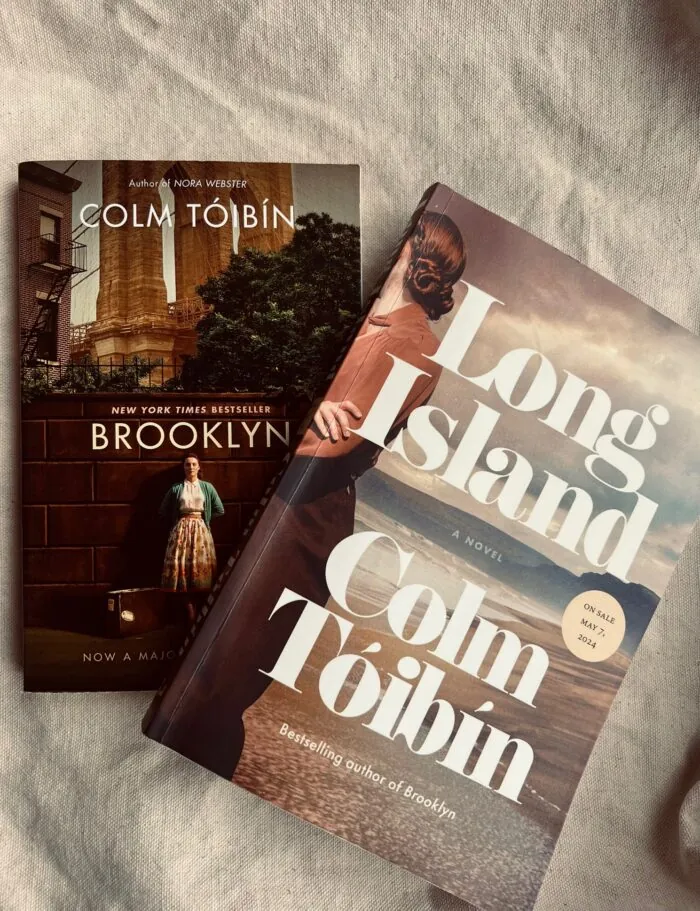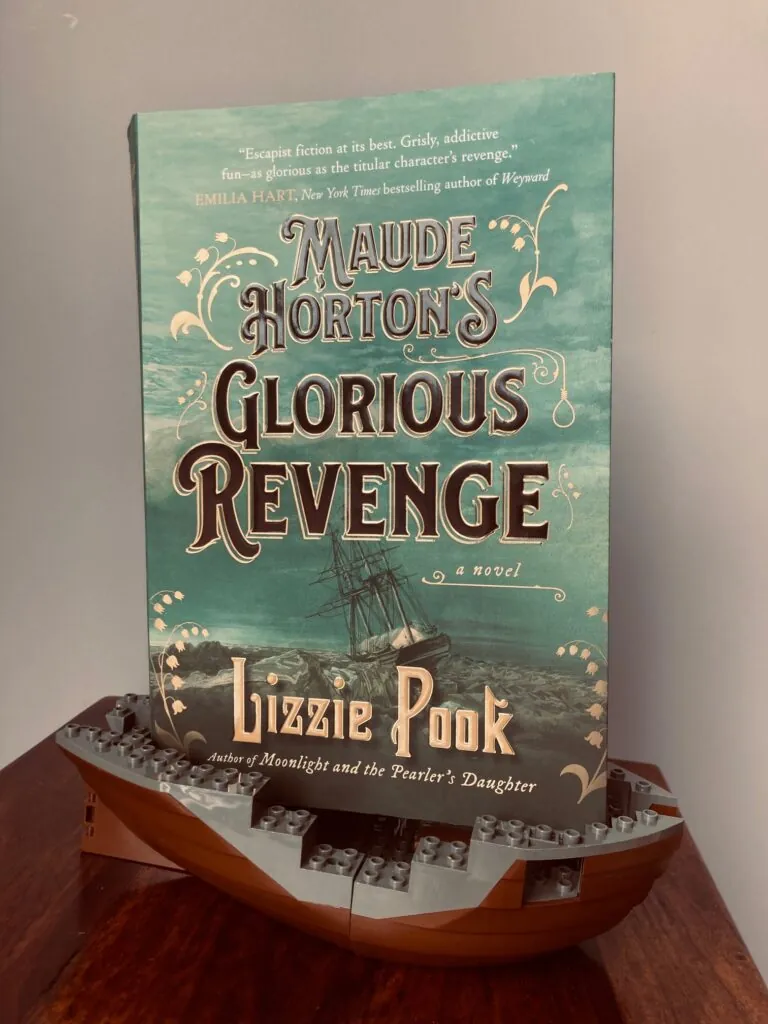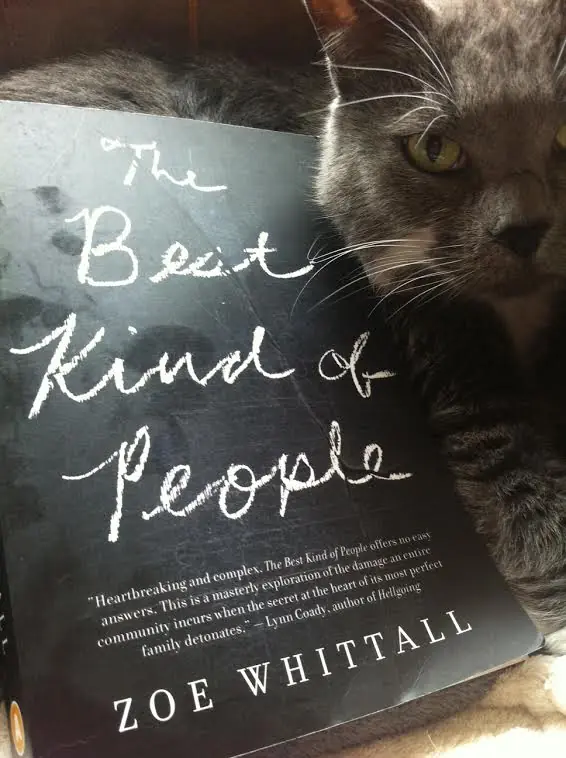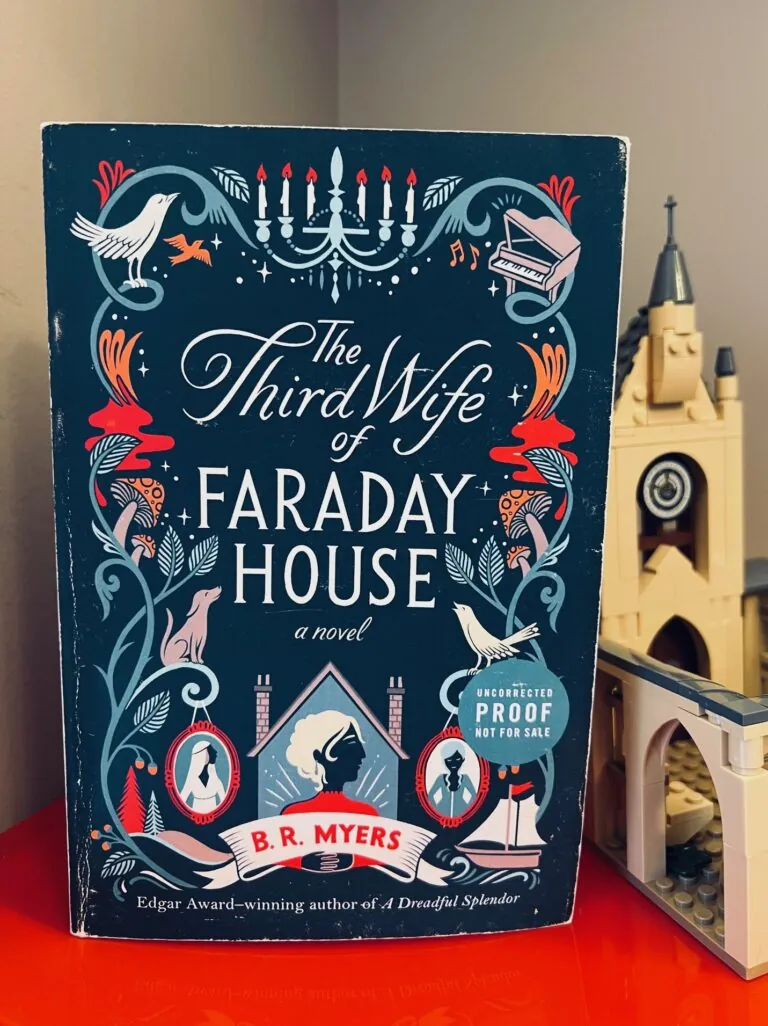Book Review: Brooklyn and Long Island by Colm Toíbín

I’d like to say I planned ahead of time to read and write the reviews of one of Ireland’s most famous authors in the month of March, but I’ll admit to this all happening by happy accident instead. Last year, a publicist sent me the latest release from Colm Toíbín, excited that he had finally released a sequel following his beloved character Eilis. I admitted to her that I had never read the first in the series that kick-started its popularity, Brooklyn, so she very kindly sent that along too so I could start from the beginning. I enjoyed the first, so I eagerly read its sequel Long Island, which I’ve also reviewed here just so my readers can get the complete picture. For those who aren’t familiar with his work, Toibin is most commonly known for very literary novels, and his Eilis Lacey books land squarely in that same category. Spoilers ahead!
Plot Summaries
Brooklyn introduces us to Eilis, a young woman living in Ireland in the 1950s. She’s got a head for numbers, and her widowed mother sees her potential. Working with an Irish priest who lives in New York City, she arranges for Eilis to sail to America, and living in a boarding house for young unmarried women. Eilis goes along with this plan, not against it, but not fully in support of it either. As the trailer above suggests, she suffers quite a bit of homesickness and is eventually called back to Ireland after a death in the family. It’s mainly a story of love and loss. She meets a lively Italian man, Tony, who falls head over heels in love with her, but when she visits home, is confronted with a big decision; stay back in Ireland and marry a man who understands her Irish self, or go back to America to continue with the exciting life she’s built for herself in the two years she’s been gone. Long Island begins almost decades after Brooklyn ends; Eilis made the decision to return back to New York and marry Tony, and together they have two children. The sequel opens with Eilis considering another trip home after a rupture in her marriage prompts her reminiscing; did she make the right decision all those years ago when she came back to America? She decides to return to Ireland without her husband, bringing her (now older) children along so the can finally meet the Irish side of their family. Home again, she is faced with the same conundrum as the last book – this Irish man who she connected with years before is still there, still waiting for Eilis, although much has changed in his life, he’s willing to throw it all away, if Eilis would too.
My Thoughts
The first book in the series is much slower than the second. It’s a coming-of-age novel, mixed with a tender look at migration, family expectations, and the challenges of becoming independent as a woman in that time period. Even watching that movie trailer may have one thinking the book isn’t all that exciting, and if you don’t appreciate Toíbín’s descriptions, I could understand why it may not appeal. HOWEVER, the second book really starts off with a bang, and sets into motion a series of events that built to a crashing climax at the end of it. I was literally breathless towards the end of Long Island, dying to know how things would resolve, if at all. This suspense is only whispered at in the first book, so I appreciated the focus on plot progression in the second. Toíbín gave us what we wanted, artistic expression be damned.
Don’t get me wrong, he is not an author that would ever fall into the ‘beach read’ category. His books are more about the words than the plots. These two novels are told from mostly Eilis’s perspective, a few times they switch over to one of her family members or close acquaintances, but they are mainly about her, and her life. They rarely stray from the interior thought- the dialogue is spare, and we spend most of the time in the characters’ heads, either learning how they feel about other people, or living through the scenery they inhabit. Because the books take place decades ago, societal expectations play a major role in steering their lives. In fact, I think Eilis would act completely differently if these stories took place in 2020, which may not say much, but for her time period, she is already viewed as a bit of a rule breaker. The second book also stresses the challenges of coming from a small town, which again, have a major influence on Eilis’s decisions. Her mother outwardly admits to caring what others think, and uses this reasoning to manage how her family looks and acts when they leave her house. Although Eilis is embarrassed by this behaviour she is subject to it as well, she just doesn’t state it out loud like her mother does.
If you don’t mind a slower narrative, and you appreciate the descriptions of the landscape, you’ll appreciate this book. If you’re looking for something with a faster pace, you’ll have to look elsewhere. If I sound a bit ambivalent about this book, it’s because I am. I enjoyed reading it while I was immersed in Eilis’ world, but I didn’t fall head over heels with it like so many readers and award juries past.





Why do I feel like that must have been a publicist new to the role…wouldn’t you have gotten to Brooklyn by now if it was a match for your reading taste? I say…not having read it myself yet either. heheh
Surprisingly not! It’s a publicist I’ve worked with for well over a decade. In her defense she usually specializes in non-fiction so doesn’t often send me stuff, so when she gets a work of fiction on her list, she usually contacts me :)
i read both and preferred Brooklyn, found Long Island to be the slower read and just couldn’t keep my head in it. not sure why.
Oh that’s interesting that you thought Long Island was slower. I think many people would argue that both are quite ‘slow’ books, but of course beauty is always in the eye of the beholder! He definitely isn’t a writer for everybody, but his characterization is top notch. I felt like I really knew his protagonist by the end of it.